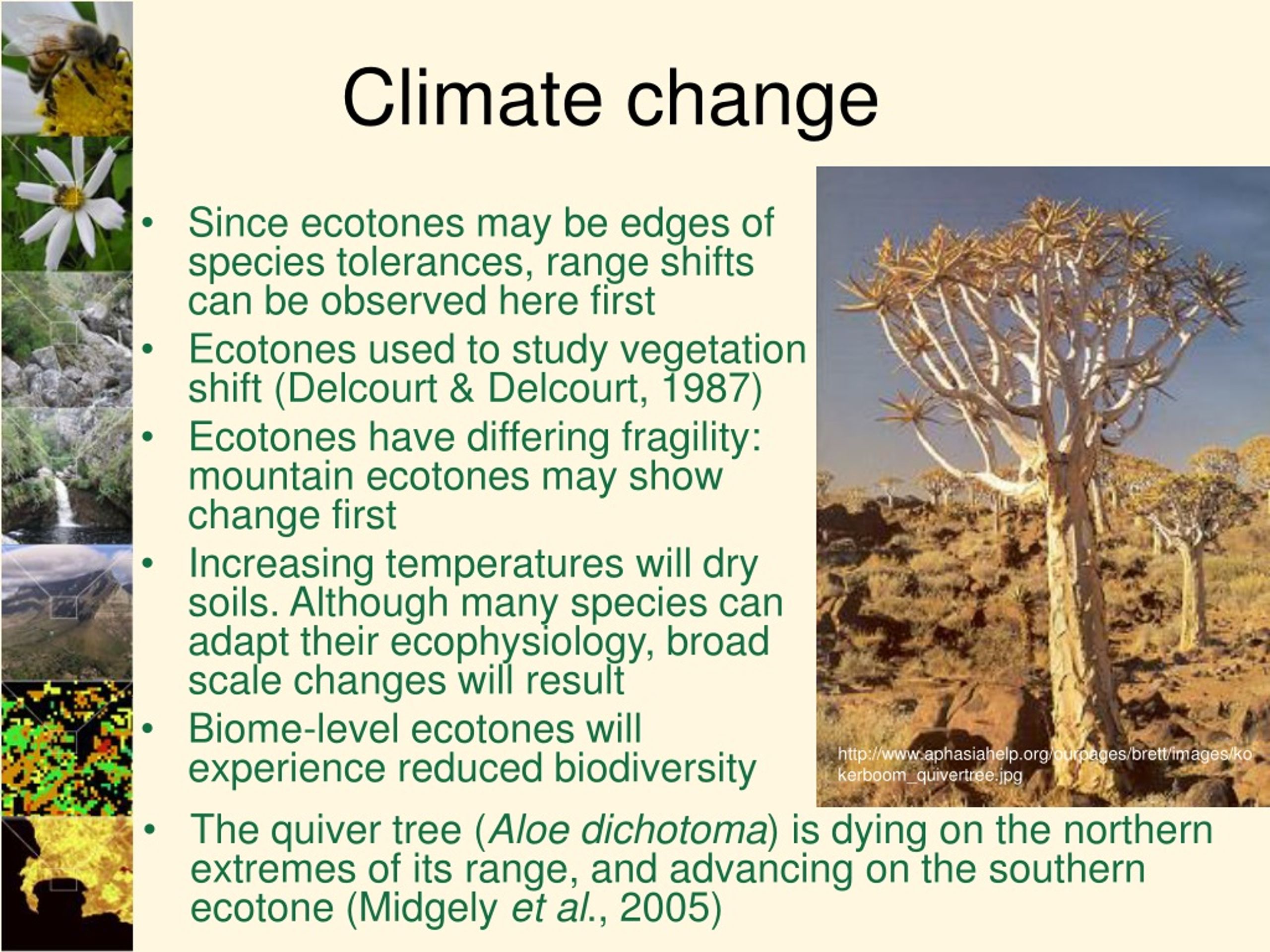

Ecotones can occur in both terrestrial and aquatic systems, and cover several spatial scales, from large spatial-scale ecotones, where biomes meet to local-scale transitions, such as mountain treelines ( Gosz, 1993 see Fig. The definition often relates ecotones to more homogenous areas found on both sides of the transition or to the landscape as a whole. These include boundary regions, borders, meeting zones, transitional zones, tension zones, zones of intermingling, and zones of transgression ( Kent et al., 1997).

Many different definitions and terms have been used in the literature to describe areas of ecological transition. The origin of the word “ecotone” is in the Greek roots “oikos” (home) and “tonus” (tension). In these transitional regions, the environment rapidly shifts from one type to another based on abiotic (e.g., climatic) and/or biotic (e.g., community structure) factors ( Holland et al., 1991 Kent et al., 1997). They often occur in areas of steep environmental transition, along environmental gradients. Because ecotones are often small in spatial extent and within this small area they are relatively rich in biodiversity, with populations adapted to change, their conservation may be a cost effective strategy.Įcotones are areas where ecological communities, ecosystems, or biotic regions coincide. As populations in ecotones are potentially pre-adapted to changing environments, they may be more resistant to climate change, biotic invasions invasive species and other environmental changes. As such, ecotones deserve high conservation investment, potentially serving as speciation and biodiversity centers. Evidence suggests that ecotones may also be speciation hotspots where new forms evolve. Various studies have shown that species richness, diversity and abundances tend to peak in ecotonal areas, though exceptions to these patterns occur. They range from mountain treelines to transitions between large biomes and ecoregions (eg, Mediterranean and arid). Ecotones occur at multiple spatial scales and range from natural ecotones between ecosystems and biomes to human-generated boundaries. Kark, in Reference Module in Life Sciences, 2017 AbstractĮcotones are areas of steep transition between ecological communities, ecosystems, and/or ecological regions along an environmental or other gradient. It is deduced that several ecological barriers exist between the sites, which is attributed to their unique terrestrial biota.S. However, the presence of 11 animal species exhibit valuable results in determining the ecological status of TVPL. The fairly small number of animal samples present difficulty in providing conclusive findings to the wildlife structure of the two study sites. Comparison of the plant diversity in Taal Volcano Crater Island and Romandan Falls within the forested areas of Mataas na Kahoy, Batangas reveal that both sites support remarkably different vegetation, with the former supporting a smaller floral diversity. In this study, we conducted biodiversity censuses in the four sites in TVPL to provide baseline information regarding the community structure of the selected study sites.

However, the current structure and assemblage of its terrestrial biotic communities remain relatively unstudied. With the exponential rise of human activities in the past decades, majority of studies conducted in Taal Volcano Protected Landscape (TVPL) are geared towards the conservation and preservation of Lake Taal's remaining biodiversity.


 0 kommentar(er)
0 kommentar(er)
